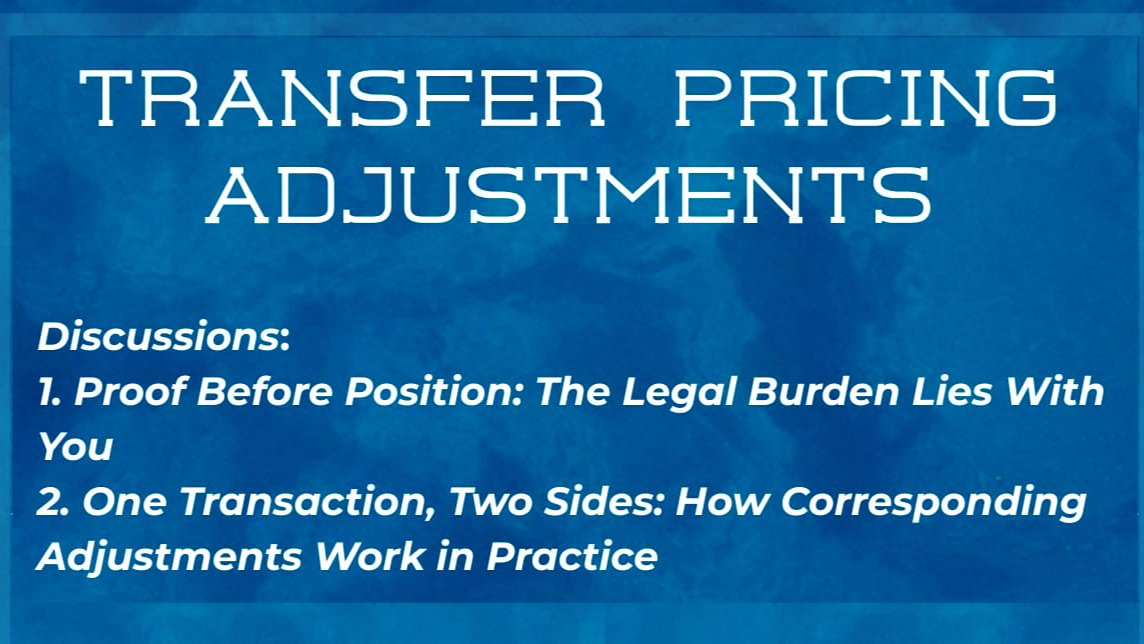
With the UAE Corporate Tax regime now fully operational, businesses engaging in related party transactions can no longer afford to treat TP adjustments as a year-end clean-up exercise. What exactly does it mean to “make a TP adjustment”? Must the financial books reflect it? Can the counterparty adjust its tax position too? And under what conditions.
The answers, as one would expect from a rules-based regime, are embedded not in assumptions but in carefully worded legislation and interpretive guides. Below is a practical analysis taking into consideration the latest official publications issued by the Federal Tax Authority (FTA).
Proof Before Position: The Legal Burden is on the Taxable Person
The starting point in any TP discussion is responsibility. The law is unambiguous in placing the burden of proof squarely on the Taxable Person. It is not sufficient to simply file a tax return; the pricing of controlled transactions must be demonstrably consistent with the Arm’s Length Principle. That means maintaining rigorous contemporaneous documentation—economic analyses, benchmarking studies, functional reviews, and intercompany agreements—available upon request and updated for each relevant tax period.
In practice, this flips the compliance model: instead of the FTA needing to prove non-arm’s-length behaviour, it is the Taxable Person who must proactively defend their position.
One Transaction, Two Sides: How Corresponding Adjustments Work in Practices
Transfer Pricing doesn't occur in isolation. The adjustment made by one party typically impacts another-and this is where the UAE's concept of corresponding adjustments becomes relevant. a mechanism designed to prevent double taxation across related entities. But this flexibility is not automatic and depends heavily on the context in which the adjustment arises.
Let's explore how this plays out in four scenarios:
Scenario 1: TP Adjustment Between Two UAE-Resident Related Parties (Before Tax Filing)
Where one UAE entity identifies a mispriced controlled transaction prior to filing its Corporate Tax Return and adjusts its taxable income upward to align with the arm’s length principle, the local counterparty may correspondingly adjust its position downward.
This reciprocal treatment is logical and permitted under law, provided both parties are UAE residents and the pricing adjustment is substantiated. No book entry is mandated, but documentary support must be retained.
Scenario 2: Adjustment Initiated by a Foreign Tax Authority
In a cross-border setting, if a foreign competent authority adjusts the taxable income of a non-UAE group entity upward (e.g., in the US or EU), the UAE entity may request a corresponding downward adjustment under the applicable Double Taxation Agreement (DTA).
This is not a unilateral right. The UAE entity must formally apply to the FTA, which will assess the reasonableness of the foreign adjustment and, if satisfied, may grant the relief to prevent double taxation. The mechanism here is often managed under the Mutual Agreement Procedure (MAP) provisions of DTAs.
Scenario 3: Voluntary Adjustment After Filing the Tax Return
If a TP error is identified after a tax return has been filed, a Taxable Person may still make a TP adjustment—but only if it results in increased taxable income. This aligns with broader tax integrity principles that prevent downward self-revisions without oversight.
In such cases, the adjustment is made via a voluntary disclosure, affecting only the tax return. Downward post-filing TP adjustments are not permitted unless arising from an FTA process.
Scenario 4: Adjustment Arising from FTA Assessment
During a tax audit or review, the FTA may challenge the pricing of a controlled transaction and unilaterally adjust the Taxable Income of the entity under review. Where the counterparty is also a UAE Taxable Person, a corresponding adjustment may be granted—but only upon application and at the FTA’s discretion.
In this case as well, the legal mechanism focuses on tax return adjustments. No requirement exists to post retrospective journal entries, unless the original accounting was itself flawed.
The Operating Principle: Substance Over Form
Across all four scenarios, the operating principle is clear: TP adjustments are a tax computation mechanism, not an accounting correction. The law does not impose a dual-bookkeeping burden, provided the underlying financials are accurate and the TP adjustment is properly evidenced.
That said, businesses may choose to mirror material TP adjustments in their financial books to align internal reporting and avoid reconciliation complexity. But this remains a governance choice, not a statutory requirement.
References:
FTA General Guide on Corporate Tax (CTGGCT1) | Federal Decree-Law No. 47 of 2022 | FTA Transfer Pricing Guide (CTGTP1)
If your business is engaging in controlled transactions—whether locally or across borders—now is the time to ensure you’re not only pricing right, but also proving right. The TP regulation gives taxpayers the flexibility to make corrections, but only within the framework of clear legal principles. Understanding when a TP adjustment is allowed, how it affects related parties, and whether it must be reflected in the financial books is critical.
Disclaimer: Content posted is for informational and knowledge sharing purposes only, and is not intended to be a substitute for professional advice related to tax, finance or accounting. The view/interpretation of the publisher is based on the available Law, guidelines and information. Each reader should take due professional care before you act after reading the contents of that article/post. No warranty whatsoever is made that any of the articles are accurate and is not intended to provide, and should not be relied on for tax or accounting advice.Contributor
Related Posts

@@PLUGINFILE@@/ttsmaker-file-2025-10-30-17-20-25.mp3Listen to this ArticleWhy Ignoring Extra Checks ...
Read More
@@PLUGINFILE@@/ttsmaker-file-2025-10-30-12-29-48.mp3Listen to this ArticleIntroductionCustoms proced...
Read More
@@PLUGINFILE@@/ttsmaker-file-2025-10-29-12-21-33.mp3Listen to this ArticleWhy Skipping Regular AML T...
Read More